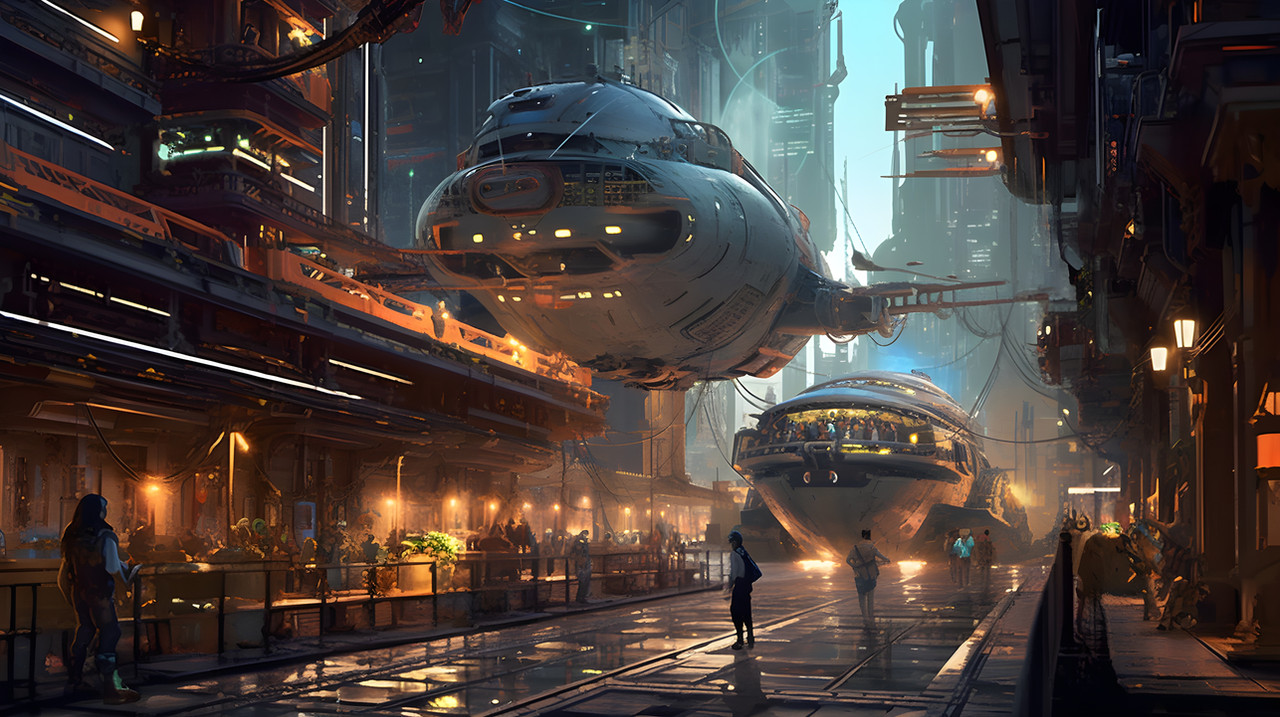HOME | DD
 NostalgicSUPERFAN — Pirate Space Port
NostalgicSUPERFAN — Pirate Space Port

#3d #3dart #bradpitt #cyberpunk #emmawatson #fanart #megazord #painting #photoshop #robot #rose #scifi #scificharacter #scififantasy #watercolor #3dartwork #cyberpunkgirl #chrishemsworth #chrispratt #fighterwarrior #3dartfemale #cyberpunkart #scificonceptart #cyberpunkcharacter #gundam_fanart #milakunic
Published: 2023-06-07 06:30:56 +0000 UTC; Views: 2984; Favourites: 21; Downloads: 5
Redirect to original
Description
Spaceport:
also known as a space center or spaceport complex, is a facility designed for the launching, landing, and servicing of spacecraft. It serves as a hub for various space activities, including the launch of satellites, crewed space missions, scientific research, and commercial space endeavors. Here are some key aspects and functions of a typical spaceport:
Launch Facilities: A spaceport features launch pads or launch complexes equipped with various launch systems, such as vertical or horizontal launch facilities. These launch facilities provide the infrastructure needed to prepare and launch rockets or spacecraft into space.
Runways and Landing Facilities: Spaceports may have runways or landing strips designed to accommodate the landing of reusable spacecraft, such as space shuttles or reusable rockets. These facilities allow for the safe return of spacecraft from orbit or space missions.
Mission Control Center: A mission control center is a vital component of a spaceport. It serves as the command and control hub for monitoring and controlling space missions. Highly skilled personnel, including engineers, technicians, and mission controllers, work in the mission control center to ensure the success and safety of space missions.
Assembly and Integration Facilities: Spaceports typically have facilities for the assembly, integration, and testing of spacecraft and launch vehicles. These facilities provide the necessary infrastructure for the construction and preparation of spacecraft, including the integration of payloads, testing of systems, and final checks before launch.
Research and Development Facilities: Spaceports often host research and development facilities where scientists, engineers, and technicians conduct experiments, develop new technologies, and advance space exploration capabilities. These facilities play a crucial role in pushing the boundaries of space exploration and fostering innovation.
Payload Processing and Storage: Spaceports include facilities for payload processing and storage. These facilities ensure the safe handling, storage, and integration of payloads, including satellites, scientific instruments, or supplies for crewed missions.
Infrastructure and Support Services: Spaceports require extensive infrastructure to support various activities, including power generation, communications systems, fueling stations, transportation networks, and security measures. Support services such as accommodation, restaurants, medical facilities, and logistical support are also provided for personnel and visitors.
Collaborative Spaces: Spaceports often foster collaboration among different organizations, including government space agencies, commercial space companies, and research institutions. These collaborative spaces provide opportunities for knowledge sharing, joint projects, and the advancement of space exploration and technology.
Visitor Centers and Educational Facilities: Many spaceports feature visitor centers, museums, and educational facilities aimed at engaging the public and inspiring the next generation of space enthusiasts. These spaces offer exhibits, interactive displays, educational programs, and tours to provide insight into space exploration and its significance.
Overall, a spaceport serves as a vital infrastructure hub for launching, landing, and supporting space missions. It combines a range of facilities and services to facilitate space exploration, scientific research, commercial space ventures, and the advancement of technology in the pursuit of understanding and exploring the cosmos.




















